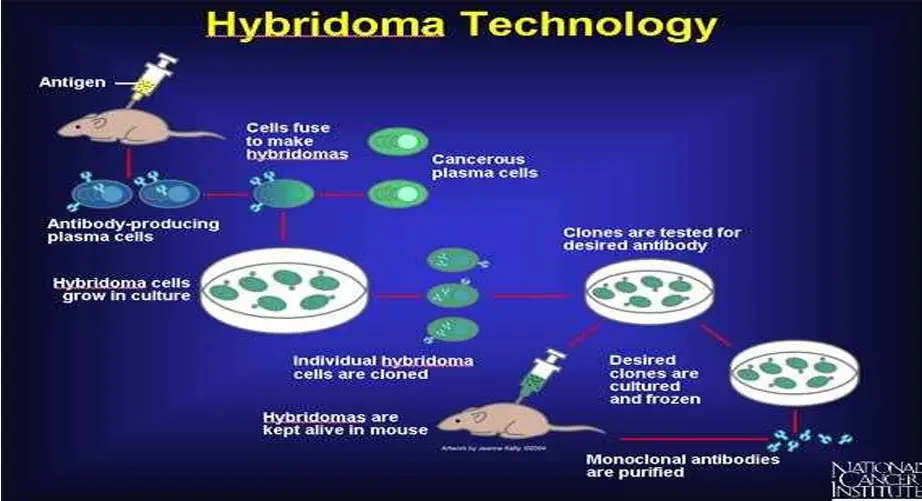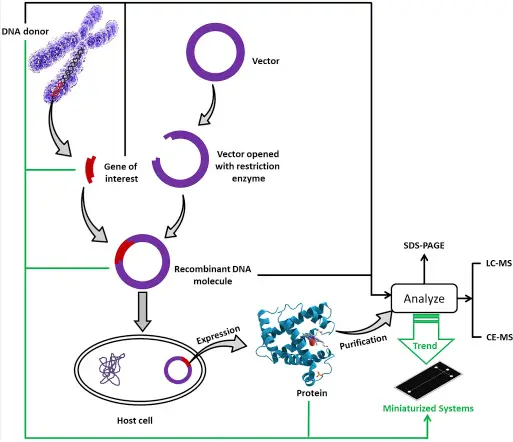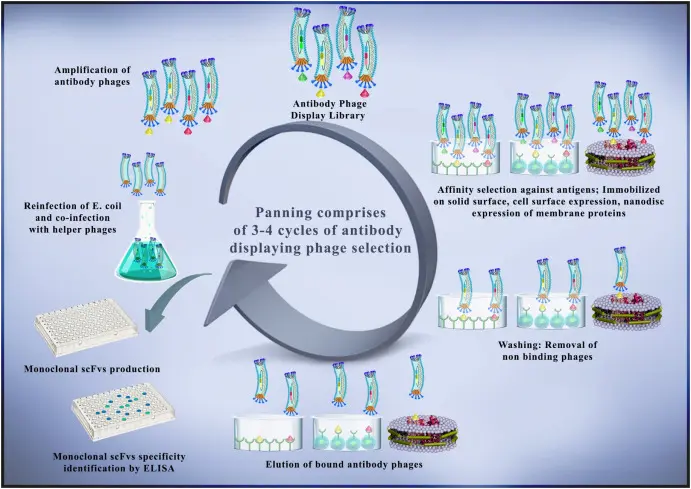Production of mAbs
Hybridoma Technology (Classical Method)
- Developed by Köhler and Milstein in 1975.
- Involves fusing an antibody-producing B cell (from a mouse immunized with the antigen) with a myeloma (cancer) cell to form a hybridoma.
- Hybridoma cells are immortal and produce large quantities of a single antibody.
Types of Monoclonal Antibodies
Humanized
Mostly human with only mouse CDRs
Chimeric
Mouse variable region+human constant region
Murine
Fully mouse antibodies; high immunogenicity
Fully Human
Entirely human sequences (via transgenic mice or phage display)
Bispecific mAbs
Bind two different antigens or epitopes
Applications of Monoclonal Antibodies
Diagnostics
ELISA, Western Blot, Immunohistochemistry, Flow Cytometry: Detect specific proteins or biomarkers with high sensitivity.
Research Tools
Tag, isolate, or detect proteins and cells in molecular biology, cell signaling, and drug discovery studies.
Therapeutics
Cancer: Target tumor-specific antigens (e.g., Trastuzumab for HER2+ breast cancer, Rituximab for CD20+ B-cell lymphoma).
Autoimmune Diseases: Inhibit inflammatory mediators (e.g., Adalimumab for TNF-α in rheumatoid arthritis).
Infectious Diseases: Neutralize viruses or bacteria (e.g., Palivizumab for RSV).
Allergy and Asthma: Block IgE or interleukins (e.g., Omalizumab).

high Specifecity
Binds only to the intended target.
Reproducibility
Same antibody can be consistently produced.
Modifiability
Can be engineered for improved
performance (e.g., affinity, stability, Fc function).



